I have taken baby steps in the last few years to get over my fear of sewing with knit fabrics. My journey began by incorporating one of my favorite parts of the sewing process - hand sewing. I have made a few Alabama Chanin style garments and have come to enjoy hand appliqué using 100% cotton jersey. But knit fabric has never come in contact with my sewing machine.
Until today . . .
I purchased this rayon knit last year from Craftsy. What can I say, I was seduced by the polka dots and the sale price. The fabric is very sproingy - which is probably not an actual word, but, in my opinion, describes this textile quite nicely. Cutting the large skirt pieces out was not very fun. The fabric width is too much for my table, and it was a bit of a wrestling match trying to get the fabric laid out nice and flat without a portion of it slinking over the edge which would then take the rest of the yardage with it. Cutting into the stuff also felt very odd. But I stuck with it, and while it is not the most beautiful or accurate job I have ever done, it worked out in the end.
Turns out my Bernina 330 has what I believe is referred to as a lightening stitch. That sounded a bit more fancy than a regular old zig-zag stitch, so I tried it out on a few scraps of material, and the results (while not perfect) were successful. The lack of a walking foot means the seams are slightly stretched, but a little bit of steam from the iron improves the stitching line. After searching online for a solution, I was disappointed to find that my machine does not allow for any adjustment of the foot pressure or feed dogs (at least, as far as I can tell). I guess Bernina really wants me to buy that expensive walking foot!
And guess what? The pattern indicates a use for seam binding - which is so much nicer than that plastic elastic stuff that is stitched into the shoulder seams of some of my purchased knit dresses and sweaters. (Now I was starting to feel at home!)
I know that some people use a stabilizer for hemming and/or finishing knits. I have some Pellon sticky tape, so I tried that on the neckline. I know this is not the right notion to use, but it did make the topstitching look much nicer than without.
I ignored the instructions for the neckline finishing. I cut my own strip of fabric and stitched it, right sides together, applied the tape, turned it under and top-stitched it in place. Because the neckline does not need to stretch, I used a straight stitch; this method worked quite well. For the sleeve hem, I used a strip of fabric, but without the help of the stabilizer since I wanted that seam to stretch as needed.
I am also wondering if it is really necessary to use a stretch stitch on the vertical seams of a full skirt? I see the need on a horizontal waist seam that requires flexibility to get over shoulders or hips, but does a lightening stitch really make a difference on a half circle skirt seam? Vogue's instructions do not indicate a difference between the bodice seams and the skirt seams . . . but they also suggest using a straight stitch and stretching the fabric as it is fed through the sewing machine which sounds like a bad idea to me, so I am not sure I trust them.
The dress is currently hanging on my dress form so the skirt hem can settle. I am thankful that the instructions noted this - I assumed with all that bounce, the fabric would not drop. But it sure did. Now I have to even everything out before hemming the garment (bleh . . .).
I would love to hear any suggestions on how deal with a curved hemline on knit fabric! A straight stay tape is not going to work, so do I just do my best not to stretch the fabric while it runs through the machine?
And if I am doing anything that looks wrong to all of you knit fabric masters out there, I would love to hear about it before I pick up any bad habits!

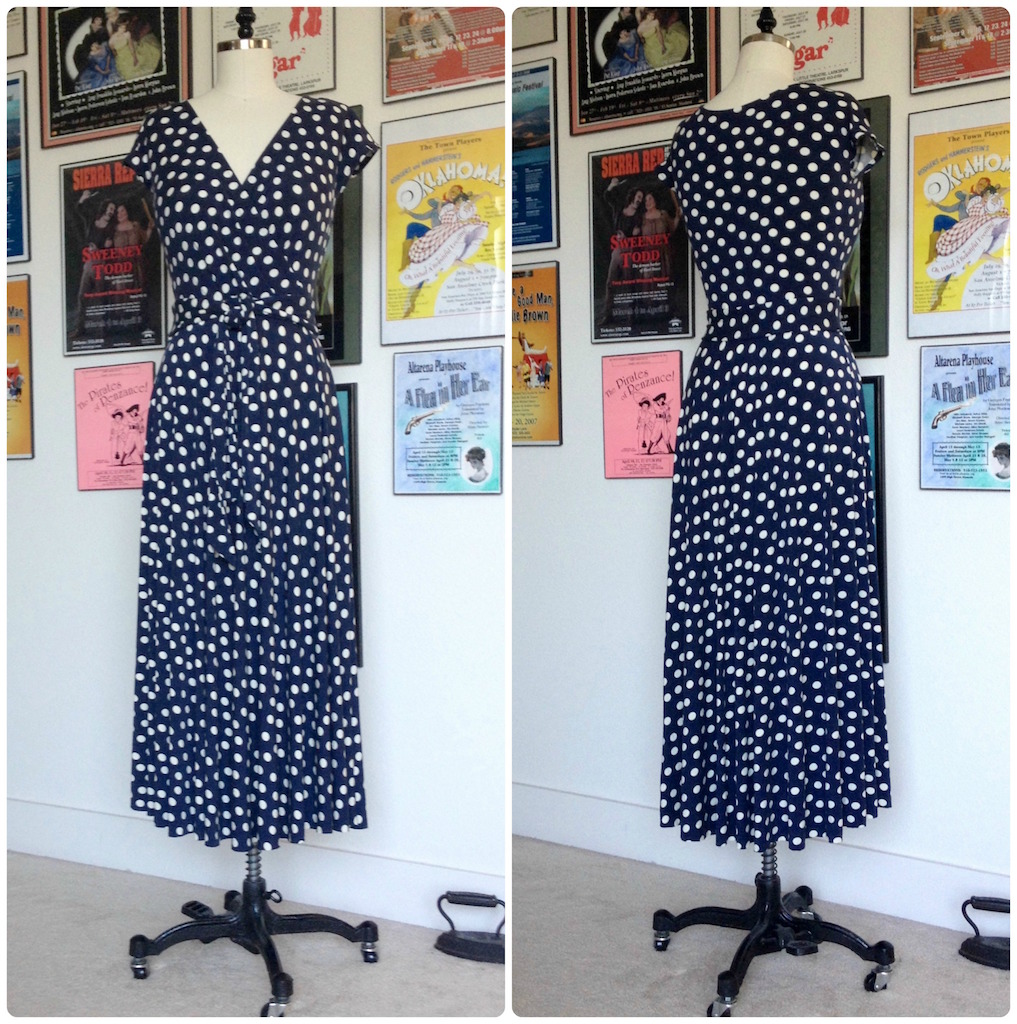
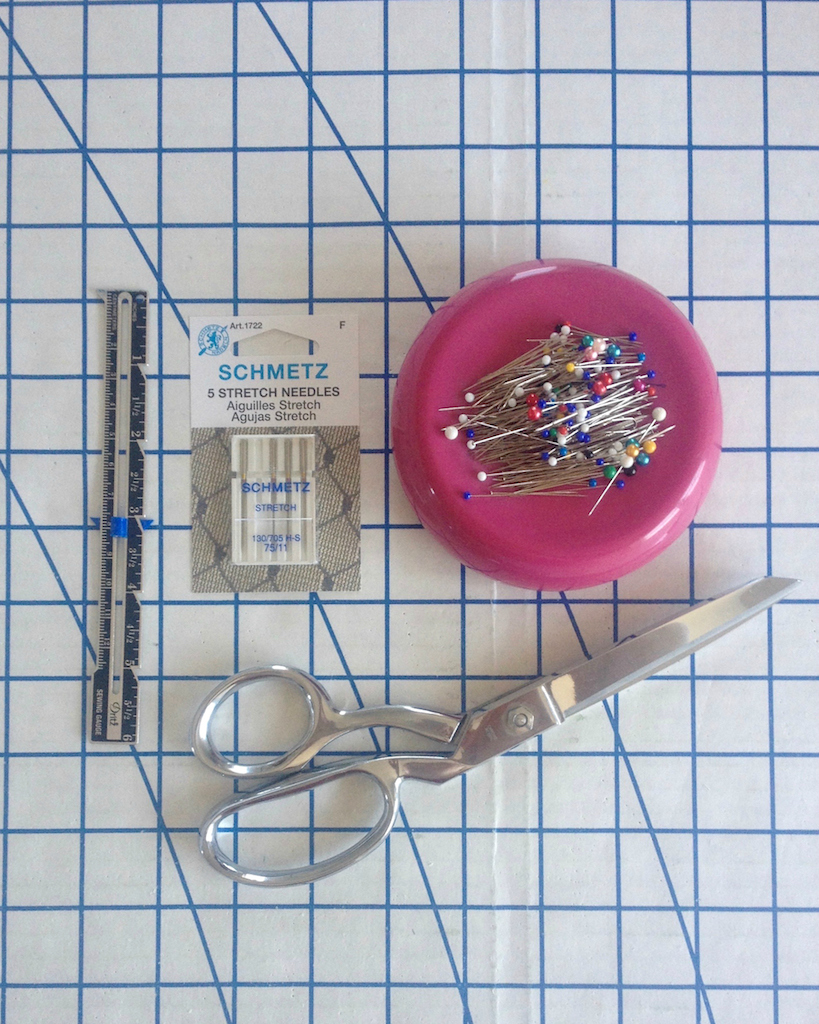
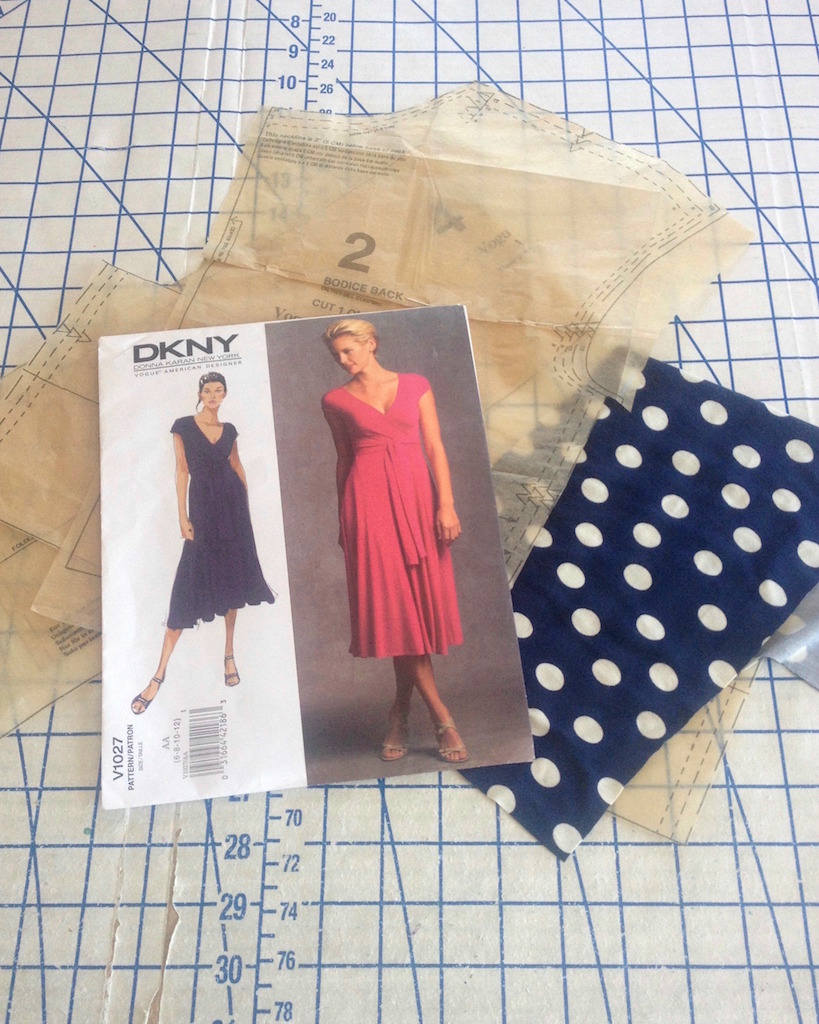
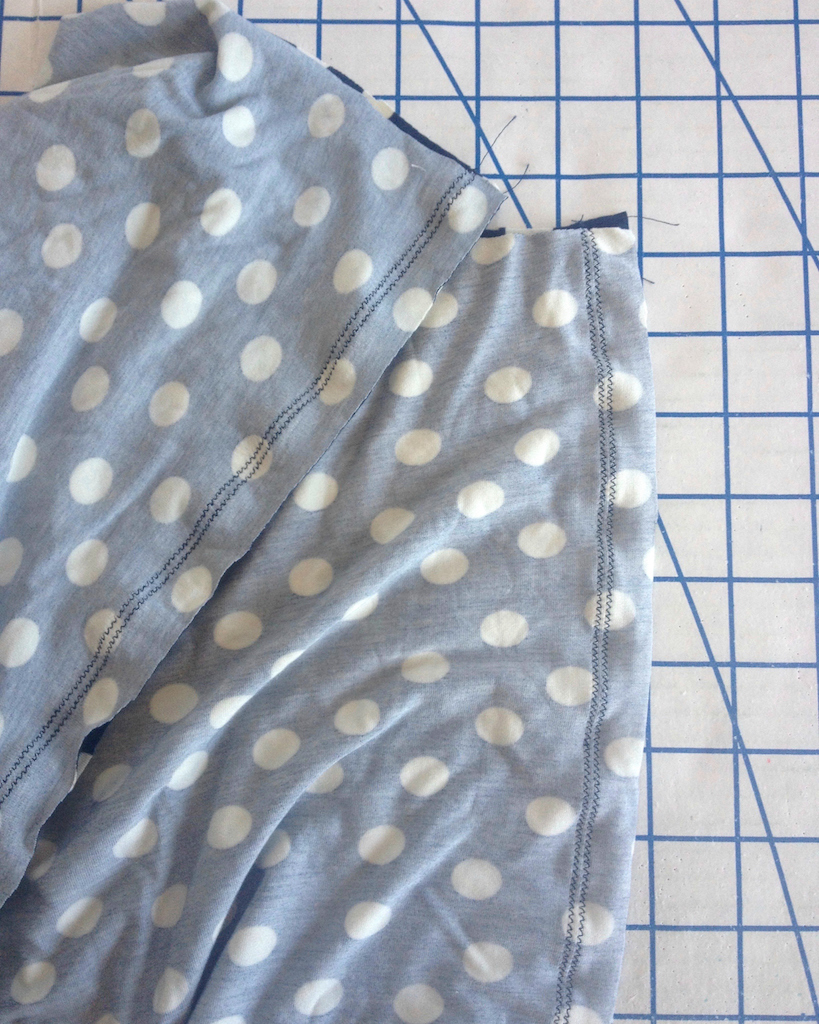
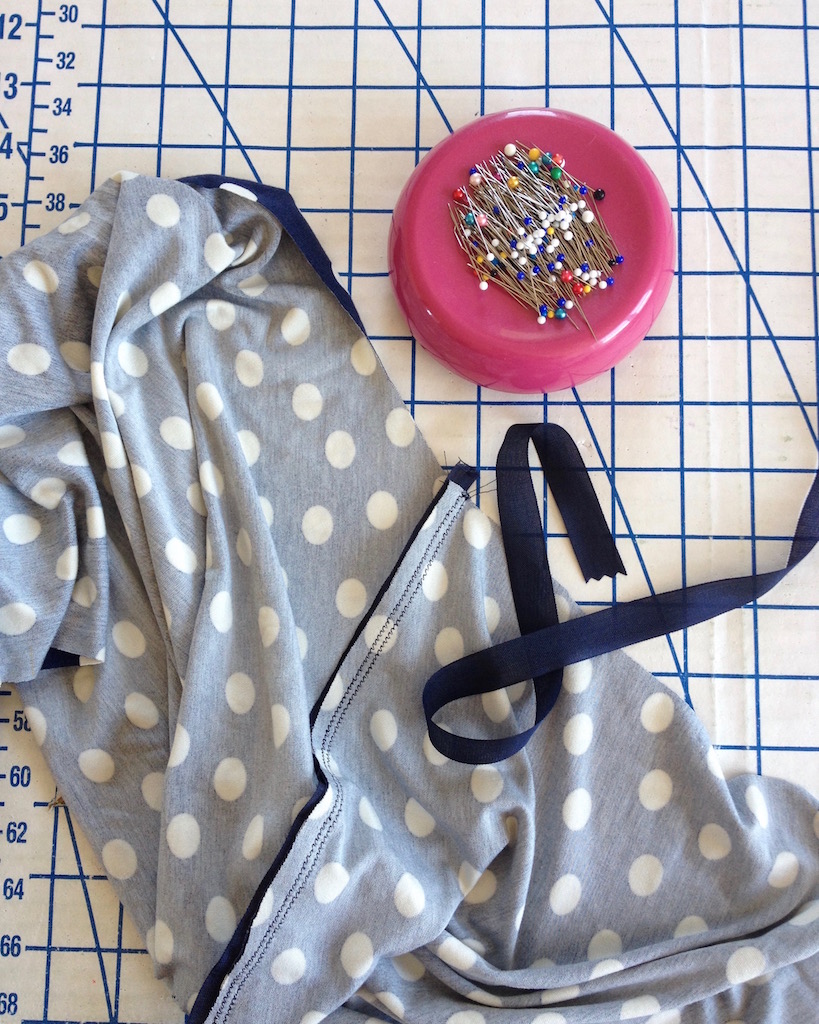
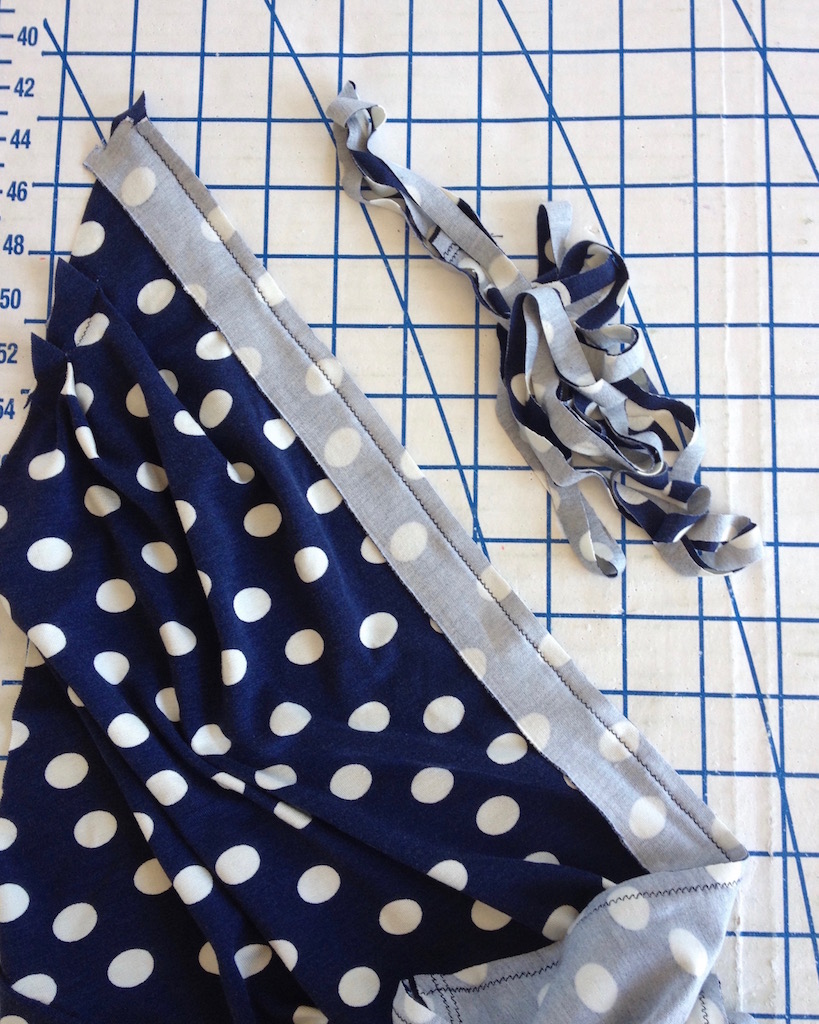
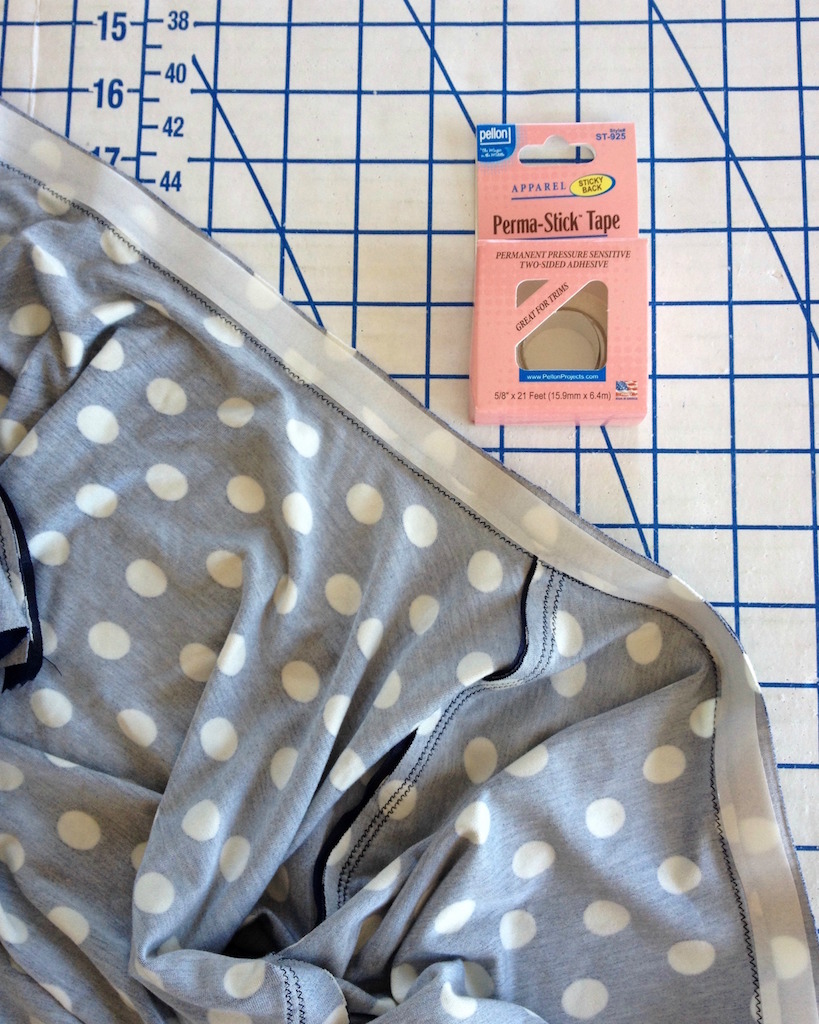
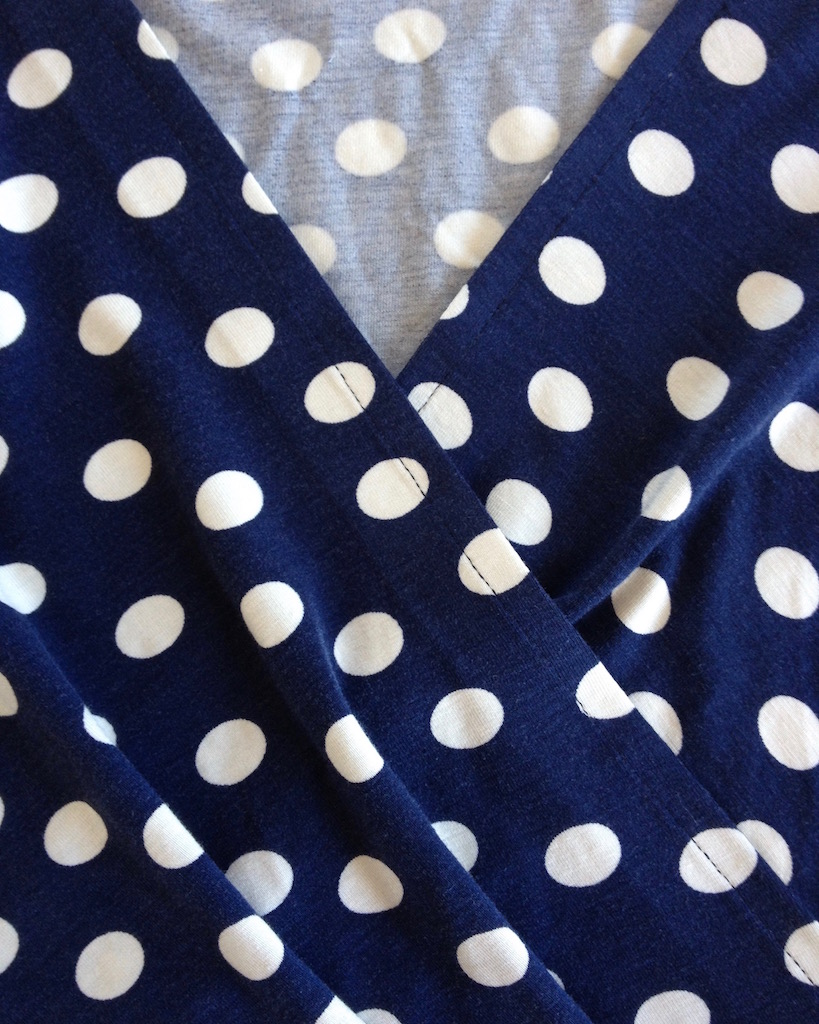
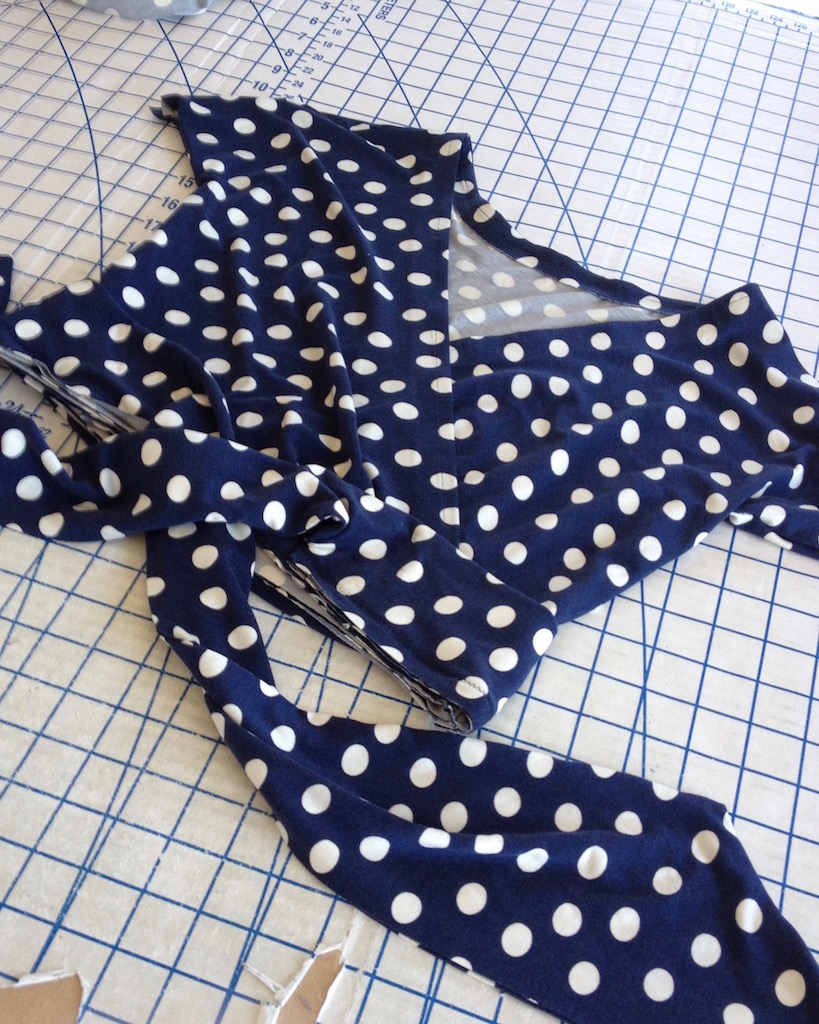
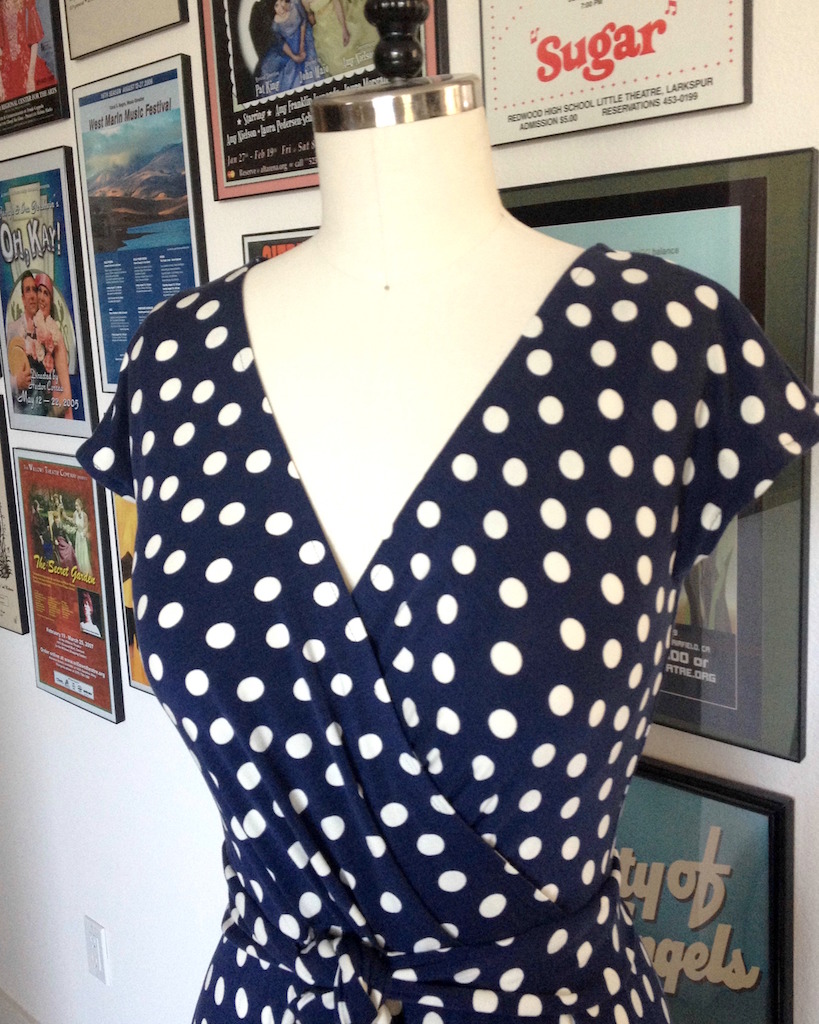
For the hem, you can use tricot fusible interfacing.
ReplyDeleteAha! Not something I have on hand, but I may have to invest in some for the next time I find a knit fabric I like.
DeleteFor a hem like that I would turn up once and hand baste, then use a twin stretch needle from the right side so that the underneath binds the edge. But a simple zigzag with the width set at 1mm also usually works if you hand baste first. Good luck and I hope you like the result
ReplyDeleteNot certain if your stay tape is the same as a lightweight fusible such as steam-a-seam. You can ease in excess with the steam-a-seam, then topstitch. I've found that twin needles can be frustrating, so I either use a lightening stitch if the seam needs to stretch or two rows of straight stitch to mimic RTW, but easier to do nicely. I recommend using some leftover swatches and seeing what you like best!
ReplyDeleteI think the Pellon stuff is different. I used to have a sheet of Steam a Seam but I can't find it. Next time JoAnn has a notion aisle sale, I think I will pick up a roll of the narrow stuff.
DeleteIt looks very Ann Taylor, so put together, yet billowy enough to curve about, and away from, your legs in some busy San Francisco intersection - city at a stand-still, close-up on the slightest smile on your face, pan back from helicopter, roll credits.
ReplyDeleteIt looks lovely! I really laughed when I saw that Vogue is still recommending that old-fashioned "stretch and sew" technique we used in the 70s on straight-stitch machines. The stitch you use for knits depends on whether the seam will be getting a lot of play, like in activewear or lingerie. In dresses like this, though, a narrow 1.0 x 3.0 zigzag will do you fine, and is easier to pick out than other stitches. For the hem, I agree that Steam-a-Seam Lite 2 (either 1/2" or 1/4", or cut strips if all they have is sheets) is the way to go. Stick it on the raw edge of the hem, then tap on the paper lightly with the iron to get the "mesh glue" to stick on the fabric and release from the paper. Turn it up raw edge and fuse with the steam. Then it's easy to flip up the hem again and topstitch with the narrow zigzag, or hand blindstitch if you want go crazy. I put up photos of this technique on my blog when I was making a Madame Gres dress last year. Now go get some of those fab DVF and Halston patterns from the 70s - I think your disco era is here!
ReplyDeleteI sew lots of knits. Here's what I do. I put the Steam a Seam on the right side (yes, right side) of the fabric, then turn it up (to the wrong side) twice using the edge of the SAS as a guide for the first roll. Once the paper is removed, I can usually roll and press in one pass - since the SAS is on the RS, I have to do it in one pass, but it's worked on a variety of knits. I then hem with just a single line of stitching using a topstitch foot and moving my needle position over. I hope that helps. I made that pattern 4-5 years ago from an ITY poly/lycra jersey and still get compliments. It's such a classic. I love following your work.
ReplyDeleteThat makes sense. I think I am going to have to pick up a roll of Steam a Seam.
DeleteGosh I love that pattern! It's the little cut on sleeve and the fuller skirt. Ahhhh.
ReplyDeleteThis is going to be really gorgeous on. The polka-dot is perfect.
I am printing everyone's tips for future reference. Your neckline turned out nicely. I made a deep V-neck blouse that only called for a fabric binding and it rippled because it is on the bias. I plan to take it apart and use iron on interfacing or a stiffer contrasting fabric instead of the soft cotton fabric the rest of the blouse is made of. I have a few DK patterns to try also. Everyone says they are cut so well that they sew beautifully and flatter the female body.
ReplyDeleteWelcome to the wonderful world of knits! Love your polka dots.
ReplyDeleteWhich of two favorite knit hems I use depends on how weighty I want the bottom of the garment to be.
If I want less weight (think floaty), I serge the hem, turn up once, and stitch. I know...seems too easy/cheating, but it works and look at RTW - even high-end RTW - to see this finish used often.
If I want more weight (think drape), I use a faced hem, even including stablizing. Sewkesey's fusible knit stabilizer tape is the BEST (great for necklines, too).
Very cute dress. As for sewing knits, I never use the lightning stitch - it is nearly impossible to remove if you need to do so, and I find a straight stitch works fine. Also I most always machine baste garments and check fit, and then sew with a regular straight stitch. That slight stretching as you sew using a straight stitch actually works well and I do that all the time, particularly with long side seams it works perfectly. Just because it is an "old" technique doesn't mean it won't work :)
ReplyDeleteThankfully, I did not have to rip out any of my stitches, but I do see what you mean about the lightening stitch being a challenge if it needs to be undone!
DeleteI was getting some rippling trying not to stretch the fabric through the machine, so the thought of doing that on purpose seemed like a really bad idea. But I trust your experience, so I am not going to give up on the straight-stitch/stretching combo. Thanks for the advice!
The dress came out very nice. You are right about the top stitching with the stabilizer, I think I'll use this method the next time I sew with knits.
ReplyDeleteLooks really lovely! I use a twin needle for hemming, which usually works without extra reinforcement unless it's an extra fine knit fabric. If you get used to sewing with knit and love it, you should really think about getting an overlocker. It's absolutely worth it and opened new worlds to me.
ReplyDeleteCheck out this post on Goodbye Valentino's website for how to interface the hem... http://goodbyevalentino.com/garment-7-vogue-8379/
ReplyDeleteLovely dress! The Vogue pattern instructions give the straight stitch directions because they are good, and quite a number of people have straight stitch only machines. Use the stitch that works best for you on your particular fabric and application.
ReplyDeleteFor construction seams, sometimes I stretch and straight stitch, sometimes I just straight stitch, sometimes I use a narrow and long zigzag, or I'll use my serger. I'll use the lightening stitch less often because it is hard to unpick. I don't use the triple straight stitch on knits, partly because it is hard to unpick. I often don't test on a sample first, but start with the least damaging to the fabric and see if that will suffice, and then restitch with something heartier if needed.
What a lovely dress, Laura!
ReplyDeleteThe lightening stitch is not a zig-zag, it is a variation on the straight stitch, 2 stitches forward and one stitch backwards. And as Beth mentioned it is very hard to unpick.
ReplyDeleteThis comment has been removed by the author.
ReplyDeleteI love your dress!! Rayon knits do have a tendency to stretch(as I found out many years ago when making a simple tank top.) Steam a seam works great as does Design Plus double sided fusible. It is the same premise and does the trick.
ReplyDeleteLove your dress . The creeping fabric problem when cutting out is much helped by oattern weights . I have 2 big ones that are rectangles if steel with handles on them . This has helped my cutting out of knits ,chiffon etc . I really love mine
ReplyDeleteThat pattern is a classic and always a success. I made it twice. Here's the link to the post concerning the the dress I made last year with some tips about how I hemmed it. Maybe it could come handy if it is not too late. : http://lamachinacoudre.blogspot.fr/2015/06/robe-vogue-1027-donna-karan-new-york.html
ReplyDeleteI often sew knits with an overlocking-style stitch. (It looks like this: __/\__/\__/\__) The arrangement on my particular machine means I have to sew with the body of the garment on the opposite side from where it usually is. This provides a visual more similar to a standard straight stitch - I can never get my zigzag short enough to look tidy.
ReplyDeleteAs for using a straight stitch on the side seams, or places that don't necessarily have to stretch - even minor movements can pop a seam. One of my early knit dresses, with straight-stitch side seams (even stretched some while sewing), pops a side seam every time I wear it, from the simple stress of sitting and moving around. I'm sure there are ways to make it work, but if you really hate mending, it's something to think about.
I haven't read every comment - but here is what I have found when using knits - every knit is a bit different. I always test with a couple needles and different stitches before I begin the project. I sew a line of stitches on scraps - and then pull - hard. On knits I have used straight stitches, various sized zig zag stitches, and sometimes the lightening bolt stitch (my last resort, but sometimes the only one that will hold.) If I use lightening bolt I often baste the seam first (just in case since it is impossible to rip that one out neatly.) As for the hem, I like to use a longish stitch to sew a row around the hem first before turning it up. It seems to stabilize the edge for me. Sometimes I use an inch wide piece of fusible knit interfacing instead to stabilize. It depends on the fabric.
ReplyDelete